Bupivacaine-d9
- CAS NO.:474668-57-0
- Empirical Formula: C18H28N2O
- Molecular Weight: 288.44
- MDL number: MFCD11977968
- Update Date: 2025-08-21 22:16:43

What is Bupivacaine-d9?
The Uses of Bupivacaine-d9
(±)-Bupivacaine-d9 (butyl-d9) is an internal standard, useful for the detection of corticosteroids in human plasma.
Biological Activity
Bupivacaine-d9 is intended for use as an internal standard for the quantification of bupivacaine by GC- or LC-MS. Bupivacaine is a sodium channel blocker and local anesthetic.1,2 It inhibits sodium currents in rat dorsal horn neurons in a concentration-dependent manner and inhibits synaptic transmission in rat sympathetic ganglia, increasing the firing threshold when used at a concentration of 200 nM.3,4 Bupivacaine (10 μM) blocks cardiac sodium channels in a use-dependent manner and inhibits respiration in cardiac cell mitochondria when palmitoyl-carnitine or acetyl-carnitine are used as substrates (IC50s = 0.78 and 0.37 mM, respectively).1,5 It also reduces thermal hyperplasia in a rat model of sciatic ligation injury when 0.6 ml of a 0.5% solution is administered into the perinerve space, and the duration of this effect is extended by co-administration of the NMDA receptor antagonist MK-801 .2 Formulations containing bupivacaine have been used as local anesthetics for surgery, oral surgery, and dental procedures and for anesthetic purposes in research studies using animals.
References
1.Arlock, P.Actions of three local anaesthetics: lidocaine, bupivacaine and ropivacaine on guinea pig papillary muscle sodium channels (Vmax)Pharmacol. Toxicol.63(2)96-104(1988) 2.Mao, J., Price, D.D., Mayer, D.J., et al.Intrathecal MK-801 and local nerve anesthesia synergistically reduce nociceptive behaviors in rats with experimental peripheral mononeuropathyBrain Res.576(2)254-262(1992) 3.Olschewski, A., Hempelmann, G., Vogel, W., et al.Blockade of Na+ and K+ currents by local anesthetics in the dorsal horn neurons of the spinal cordAnesthesiology88(1)172-179(1998) 4.Tabatabai, M., and Booth, A.M.Mechanism of action of local anesthetics on synaptic transmission in the ratAnesth. Analg.71(2)149-157(1990) 5.Weinberg, G.L., Palmer, J.W., VadeBoncouer, T.R., et al.Bupivacaine inhibits acylcarnitine exchange in cardiac mitochondriaAnesthesiology92(2)523-528(2000)
Properties of Bupivacaine-d9
| storage temp. | Store at -20°C |
| solubility | DMF: 30 mg/ml,DMSO: 25 mg/ml,Ethanol: 30 mg/ml |
| form | A solid |
Safety information for Bupivacaine-d9
Computed Descriptors for Bupivacaine-d9
New Products
Indole Methyl Resin tert-butyl 9-methoxy-3-azaspiro[5.5]undecane-3-carboxylate Boc-His(Boc)-OH 2-CTC Resin 4-Chloro-7-tosy1-7Hpyrrolo[2,3-d]pyrimidine 5,7-Dibromo-1H-indole 2,5-dichloro-N-hydroxy-4,6-dimethylpyridine-3-carboximidamide 2,2-Dimethoxy-7-azaspiro[3.5]nonane hydrochloride 4-chloromethyl-5-methyl-1,3-dioxol-2-one (DMDO-Cl) R-2-BENZYLOXY PROPIONIC ACID 1,1’-CARBONYLDIIMIDAZOLE 1,1’-CARBONYLDI (1,2-4 TRIAZOLE) N-METHYL INDAZOLE-3-CARBOXYLIC ACID 4-((2-hydroxyethyl)thio)benzoic acid 1-(TERT-BUTOXYCARBONYL)-2-PYRROLIDINONE Methyl 6-methylnicotinate 3-Pyridineacrylic acid tert-Butyl carbazate TETRAHYDRO-2H-PYRAN-3-OL 2-((4-morpholinophenylamino) (methylthio) methylene) malononitrile 3-(4-morpholinophenylamino)-5-amino-1H-pyrazole-4-carbonitrile 2,4-dihydroxybenzaldehyde 1,3-Diethyl-1,3-Diphenylurea Methyl 2-methylquinoline-6-carboxylateRelated products of tetrahydrofuran
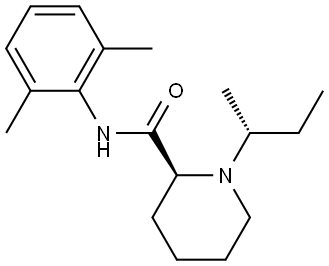

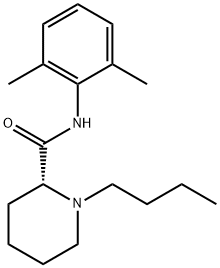
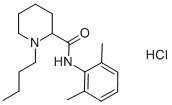
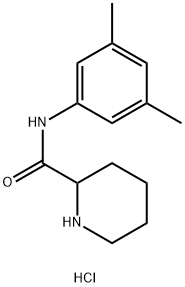

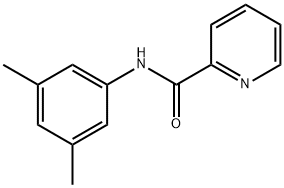

You may like
-
 Pyridine 99.5% HPLC /UV SpectroscopyView Details
Pyridine 99.5% HPLC /UV SpectroscopyView Details
110-86-1 -
 Guanine , 99%View Details
Guanine , 99%View Details
73-40-5 -
 Piperazine Spot supply, best priceView Details
Piperazine Spot supply, best priceView Details
110-85-0 -
 Potassium Hydroxide 90%View Details
Potassium Hydroxide 90%View Details
1310-58-3 -
 Dibutyl PhthalateView Details
Dibutyl PhthalateView Details
84-74-2 -
 Imidazole Spot supply, competitive priceView Details
Imidazole Spot supply, competitive priceView Details
288-32-4 -
 Octadecyl 3-(3,5-di-tert-butyl-4-hydroxyphenyl)propionate 98% (GC)View Details
Octadecyl 3-(3,5-di-tert-butyl-4-hydroxyphenyl)propionate 98% (GC)View Details
2082-79-3 -
 Thiourea 99% ARView Details
Thiourea 99% ARView Details
62-56-6
